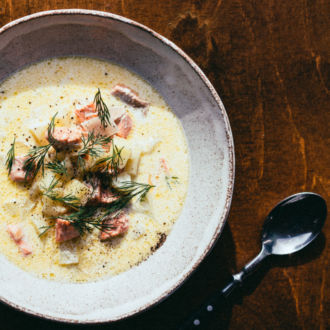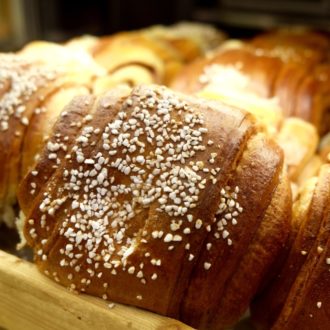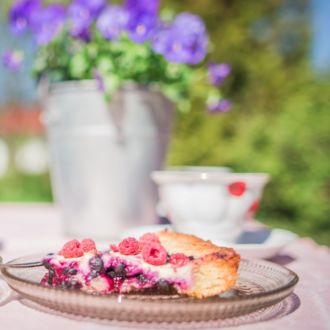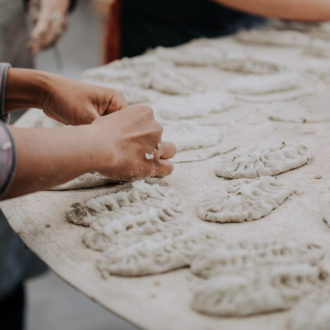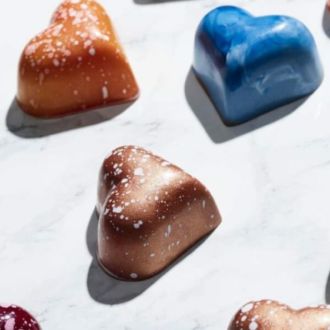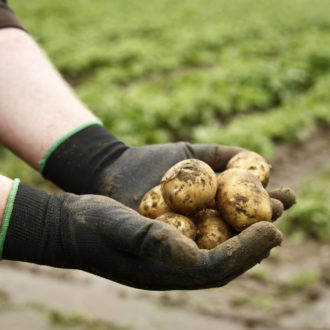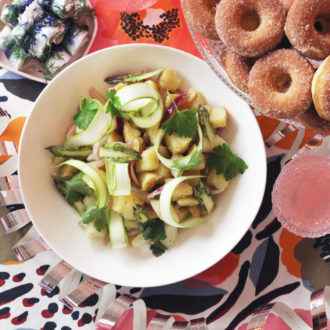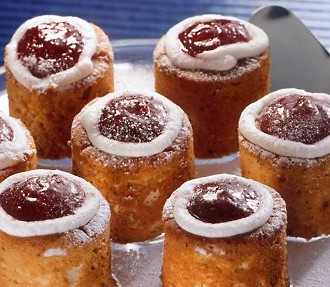Some pastries are strongly connected to a certain holiday or season – Runeberg cakes appear in early February, only to give way to Shrovetide buns a few weeks later.
Other delicacies are associated with a certain region – the dark malt bread that originated in the islands off the southwestern Finnish coast is still known as archipelago bread. You can find additional regional specialities in the other articles in this series, which shows off dishes from the north, south, east and west of Finland – although many of them are now common all over the country.
One universally popular treat, no matter where you travel in Finland, is the korvapuusti, a cinnamon bun that goes great with coffee or tea. It is ever-present in Finnish cafés, on picnics in the park and on the kitchen table when guests come over.
If you’re still hungry for something sweet after reading this article, you can find more recipes for baked goods on our Christmas recipe page and in our May Day brunch post.
By ThisisFINLAND staff, August 2022
Recipes and descriptions supplied by Timo Lepistö
Sweet buns (pulla), including cinnamon buns (korvapuusti)
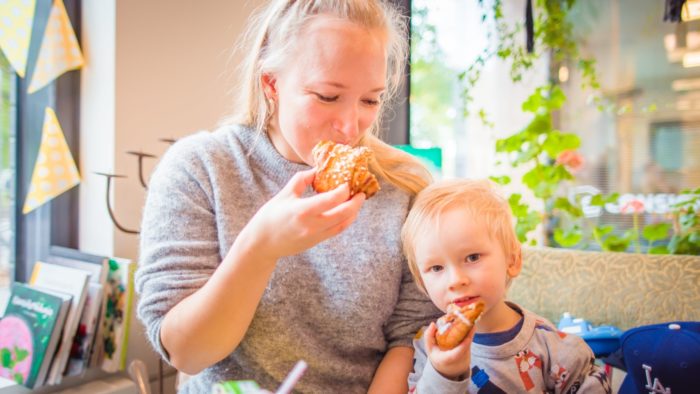
Customers enjoy a sweet baked treat at Café Puusti in the central western Finnish city of Tampere.Photo: Laura Vanzo/Visit Tampere
This mainstay can take many different forms if you change the shape and the filling. In addition to basic sweet wheat buns, we list three of the most popular variants: Shrovetide buns, butter-eye buns and cinnamon buns. All of them use the same dough.
Basic sweet wheat buns (pulla)
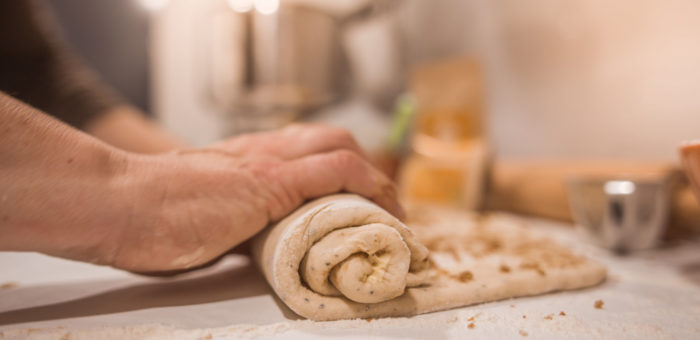
A baker rolls sugary filling into a batch of dough at Café Puusti in Tampere, getting ready to cut it into pieces that will become cinnamon buns.Photo: Laura Vanzo/Visit Tampere
For a deeper taste, this recipe uses a light sourdough, but you can also make it a bit more quickly skipping the starter dough preparation (but still adding the same ingredients).
Starter dough:
- 2 dl cold water
- 3 dl wheat flour
- 5 g dried yeast
- 1 tbsp ground cardamom
The starter dough is at its best when made a day before you actually bake it. Mix all the ingredients in a bowl, cover it and store it in the fridge. (If you’re going to make it and bake it on the same day, mix it at least two hours ahead of time, use warm water and keep the dough at room temperature.)
- 12–14 dl strong wheat flour
- 3 dl milk
- 4 eggs
- 250 g butter
- 2 1/2 dl caster sugar
- 1 tbsp salt
- 11 g dried yeast
(Note: For a vegan version, you can leave out the eggs, use oat milk or water instead of milk, and substitute margarine for the butter. Brush the buns with melted margarine instead of an egg mixture.)
In a stand mixer bowl, blend the starter dough, milk, two eggs and about 12 dl of the flour. With a hook attachment, knead the dough for ten minutes and adjust the thickness of the dough with flour. Add soft butter and continue kneading for about two or three minutes, until the butter is fully absorbed. Cover the dough and leave it to rise for about 40 minutes.
Tip the dough onto a floured work counter and knead it a bit, until it feels a bit firmer. Divide into 25–30 equal portions and shape into round buns, then put the buns onto a baking sheet, cover and let rise for another 30 minutes.
Preheat the oven to 180 degrees Celsius. Whisk two eggs as an egg wash and brush the buns with it. Sprinkle pearl sugar on top (optional). Bake the buns for 13–15 minutes.
Cinnamon buns (korvapuusti)

Many people in Finland like to top off a walk, hike or bike ride with a cup of coffee and a cinnamon bun, whether out on the trail or in a café.Photo: Laura Vanzo/Visit Tampere/Café Puusti
This classic Finnish staple often accompanies coffee or tea. This website has even gone so far as to call the korvapuusti “part of the fabric of Finnish society.”
- 250 g butter at room temperature
- 1 1/2 dl light brown sugar
- 4 tbsp ground cassia cinnamon
- 2 tbsp all-purpose flour
- 1/2 tsp salt
Make the same dough as the basic sweet wheat buns (above). After letting it rise once, tip the dough onto a lightly floured work counter and roll it out to a thickness of one centimetre – a rectangle about 40 centimetres wide. Spread the very soft butter onto the dough, leaving a five-centimetre strip at the top with no butter. Mix all the dry ingredients and sprinkle an even layer over the butter.
Roll the dough up into a tight log starting from bottom edge and finishing at the unbuttered top edge. Make sure the seam is facing down. Cut into three-centimetre pieces and press two fingers on top to spread the bun a bit. Cover and leave to rise for 30 minutes.
Preheat the oven to 180 degrees Celsius. Brush with egg wash and sprinkle some pearl sugar on top. Bake 13–15 minutes until golden brown.
Shrovetide buns (laskiaispulla)
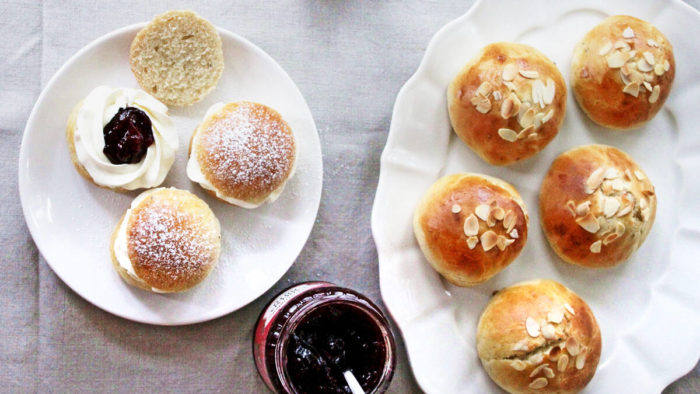
There are two traditional fillings for Shrovetide buns: jam or almond paste.Photo: Visit Finland
You can use the recipe for basic sweet wheat buns (above) to make Shrovetide buns, as follows:
After taking the buns out of the oven and letting them cool, slice off the top of each one. Put raspberry jam or almond paste in the middle of the bottom half and top it with whipped cream. Carefully replace the top half of the bun.
Tip: It’s fun to create a buffet with different fillings so everyone can make their own version. Fillings can include various jams and nut spreads, Italian meringue or sweet cream-cheese mousse.
Butter-eye buns (voisilmäpulla)
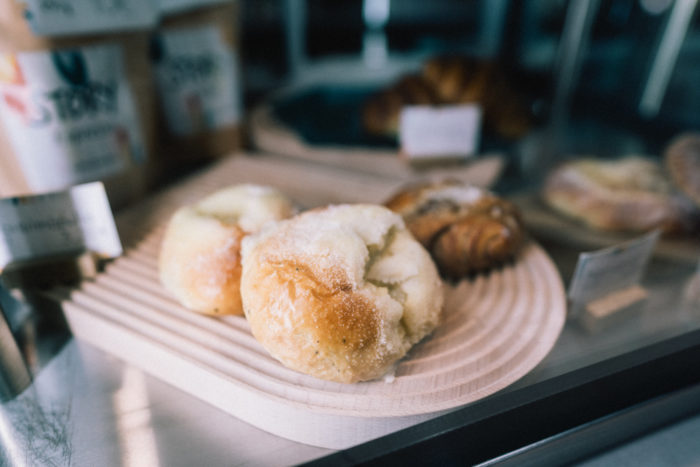
Voisilmäpulla, or “butter-eye bun,” is a buttery sweet culinary experience, as the name implies. (This photo is from Story, a restaurant in Helsinki.)Photo: Joonas Ojala/Story Restaurant
This classic exists for the pure enjoyment of sugary, buttery flavours. In Finnish it’s called voisilmäpulla, which translates to “butter-eye bun.”
- 200 g butter
- 1 dl caster sugar
- 1 tbsp all-purpose flour
- 1/2 tsp salt
Make the same dough as the basic sweet wheat buns (above), all the way through letting it rise a second time. You can replace cardamom with vanilla to boost the dairy flavours.
Cut the cold butter into cubes of approximately two centimetres. Mix the dry ingredients. Brush the buns with egg wash and, using sharp scissors, cut an “X” into the top of each bun. Place a cube of butter on top and carefully push it halfway into the bun. Sprinkle a half tablespoon of sugar over each bun and bake for 13–15 minutes. Let cool completely before eating.
Strawberry brita cake (britakakku)
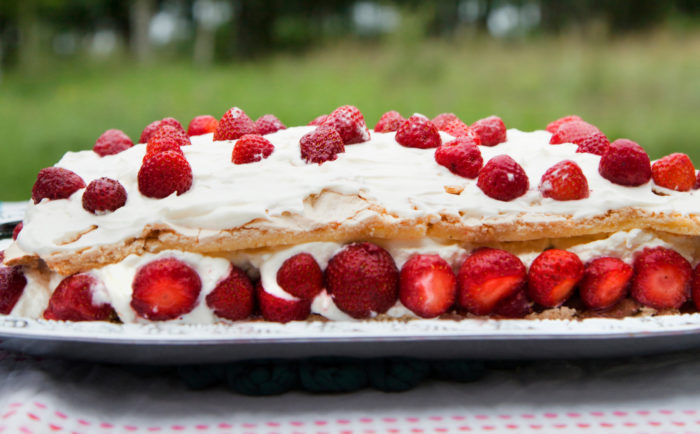
A brita cake is a summery delicacy with layers of meringue and strawberries or fruit.Photo: Katri Lehtola/Keksi/Visit Finland
For Finnish people, this is one of the best-known forms of strawberry cake. It’s popular all over the Nordic countries, but names, recipes and fillings may vary. A meringue cake, it forms an excellent base for a filling of berries or fruit.
Cake:
- 150 g butter, room temperature
- 2 1/2 dl all-purpose flour
- 1 1/2 dl caster sugar
- 2 tsp baking powder
- 3 egg yolks
- 1 dl milk
Meringue:
- 3 egg whites
- 1 1/2 dl caster sugar
- 2 dl flaked almonds (optional)
Filling:
- 6 dl cream
- 1/2 dl caster sugar
- vanilla (optional)
- strawberries (or other berries or fruit)
Put butter and sugar in a stand mixer bowl and whisk with paddle attachment until creamy. Add egg yolks one by one and mix at lower speed until fully incorporated. Mix the dry ingredients and sift them into the batter, adding the milk at the same time. Mix until smooth.
Put the egg whites in another clean stand mixer bowl, and start to whisk at medium speed. Add 1/3 of the sugar and continue whisking until it dissolves. Increase the speed slightly and add 1/3 of the sugar, whisking until it dissolves. Add the rest of the sugar and whisk until it has dissolved and the meringue is glossy and stiff.
Preheat the oven to 170 degrees Celsius. Spread the cake batter onto a baking sheet lined with baking paper, then spread the meringue on top of the cake batter. Sprinkle the flaked almonds on top (optional). Bake the cake for about 25 minutes and leave it to cool.
Wash, clean and slice the strawberries. Whip the cream together with sugar and some vanilla (optional).
To assemble, cut the cake into two identical pieces. Spread half of the whipped cream on one half of the cake and add half of the strawberries. Carefully lift the other half and place it on top as the next layer. Then repeat the toppings with the remaining whipped cream and strawberries. Serve immediately. You can decorate the cake with edible flowers and with leaves of lemon balm or mint.
Runeberg cakes (Runebergin torttu)
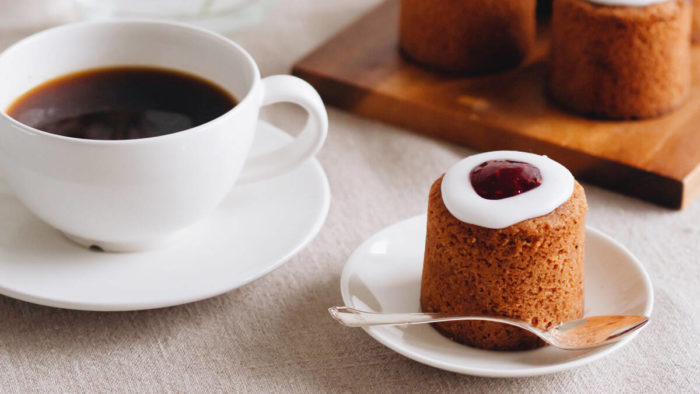
Runeberg cakes appear in cafés and stores ahead of February 5, the birthday of poet J.L. Runeberg.Photo: Visit Finland
This pastry is named after Finland’s national poet, Johan Ludwig Runeberg. Legend has it that this is his wife Fredrika’s recipe from the 1850s, but some evidence suggests that it could also be an adaptation of a creation by baker Lars Astenius. Both he and the Runebergs lived in Porvoo, about 50 kilometres (30 miles) east of Helsinki.
The Runeberg cake is a torte that includes cookie crumbs or breadcrumbs and a dash of a punch or rum. It was first sold commercially bearing Runeberg’s name at Café Ekberg in Helsinki at Christmastime in 1865. Nowadays it appears in cafés and stores just in time for the poet’s birthday on February 5.
Cake:
- 150 g butter
- 75 g gingerbread crumbs or cookie crumbs (if using cookie crumbs, you can add a bit of ground ginger and cinnamon)
- 2 dl all-purpose flour
- 1 1/2 dl caster sugar
- 1 1/2 tsp baking powder
- 1 dl coarsely ground almond
- 2 tsp ground cardamom
- 2 eggs
- 1 dl cream
- 1/2 tsp salt
- bitter almond extract (optional)
- vanilla (optional)
Syrup:
- 2 dl water
- 1/2 dl sugar
- 1/2 dl punch or rum
Decoration:
- raspberry jam
- white icing
Preheat the oven to 200 degrees Celsius. Grease and flour a deep muffin tray, enough for 10–12 cakes (in Finland you can find Runeberg cake forms that yield a perfectly cylindrical shape).
Beat the sugar and butter in a stand mixer with a paddle attachment until light and fluffy. Add the eggs one by one. Add the cream and carefully mix until absorbed. Add the rest of the ingredients and mix until fully combined. Pour the batter into the forms and bake for 15 minutes.
For the syrup, put water and sugar into a pot and heat until the sugar is dissolved. Add the punch or rum. Let the syrup cool a bit.
Let the cakes cool for ten minutes after taking them out of the oven, then turn them out of the forms.
While the cakes are still warm, soak them in the syrup for a minute and then lift them onto a wire rack to finish cooling. Place a heaping teaspoon of raspberry jam neatly on top of each cake and pipe white icing around the jam.
Malt bread, also known as archipelago bread (saaristolaisleipä)
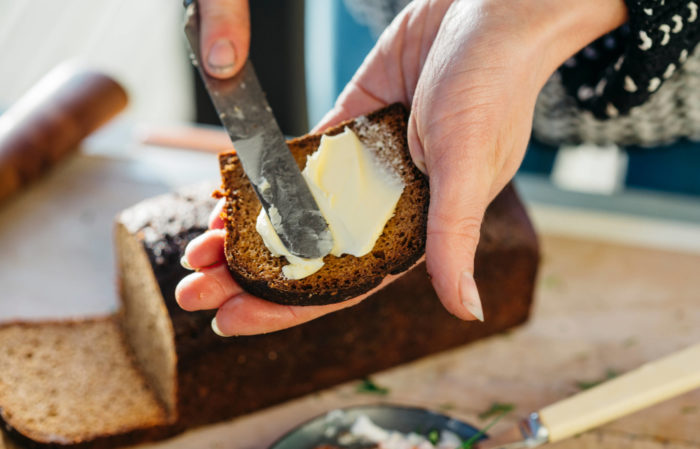
You can enjoy the taste of dark, sweet archipelago bread with butter only, or with various other toppings.Photo: Elina Manninen/Keksi/Visit Finland
This dense, malty, flavourful bread is a traditional speciality from the archipelago region off the southwestern coast of Finland. The most amazing thing about it is the richness of its sweet taste. Usually it is served with cold fish dishes such as gravlax (cured salmon) or gubbrörä (a topping made from anchovies and boiled eggs), but you can also enjoy it with nothing but high-quality salted butter.
- 2 dl crushed rye malt
- 2 dl hot water
- 1 1/2 dl dark syrup
- 2 dl wheat bran
- 2 dl rye flour
- 6–8 dl wheat flour (or all-purpose flour)
- 3 dl water
- 1 tbsp salt
- 11 g dry yeast
- 2 tsp ground anise
- 2 tsp ground fennel seeds
- 4 tsp ground liquorice root (optional)
For basting:
- 1/2 dl dark syrup
- 1/2 dl water
Mix the hot water (it should be boiling hot) with the crushed rye malt in a mixer bowl. Let it cool to room temperature. Add all the other ingredients, saving the cooler water for last. That way you can adjust the texture (it should be paste-like). Mix slowly for ten minutes. Let the dough rise for an hour. Fill two greased loaf pans with the dough, cover them and let them rise for 90 minutes, until doubled in size.
Bake at 180 degrees Celsius for 80 to 90 minutes. At the 60-minute mark, mix the syrup and water and quickly brush the top of the loaves generously with the mixture. Put the bread back in the oven and bake for 20 to 30 minutes more. Let it cool completely before enjoying the first bite. Malt breads are at their best after being stored for a few days, covered in cling film.

